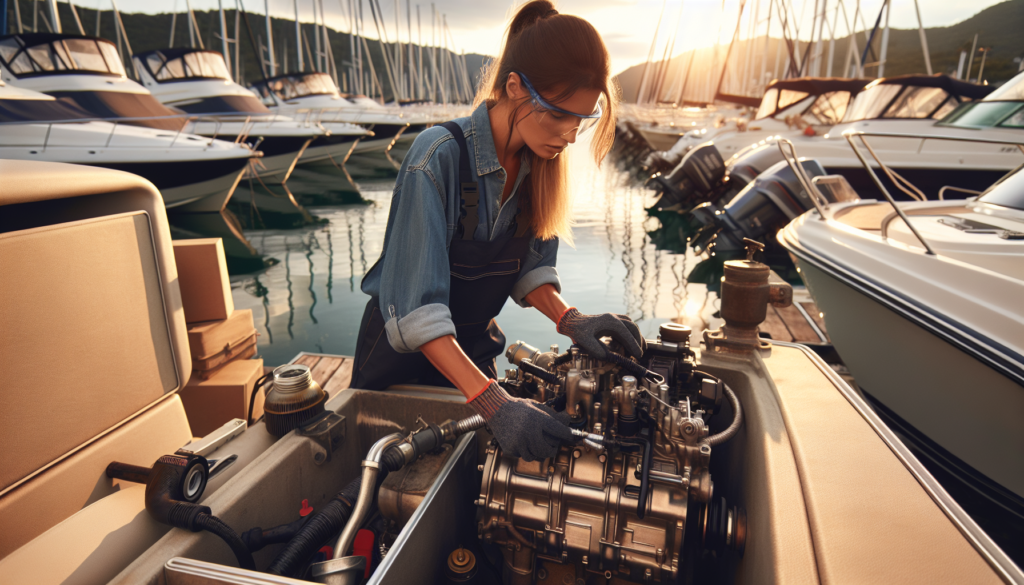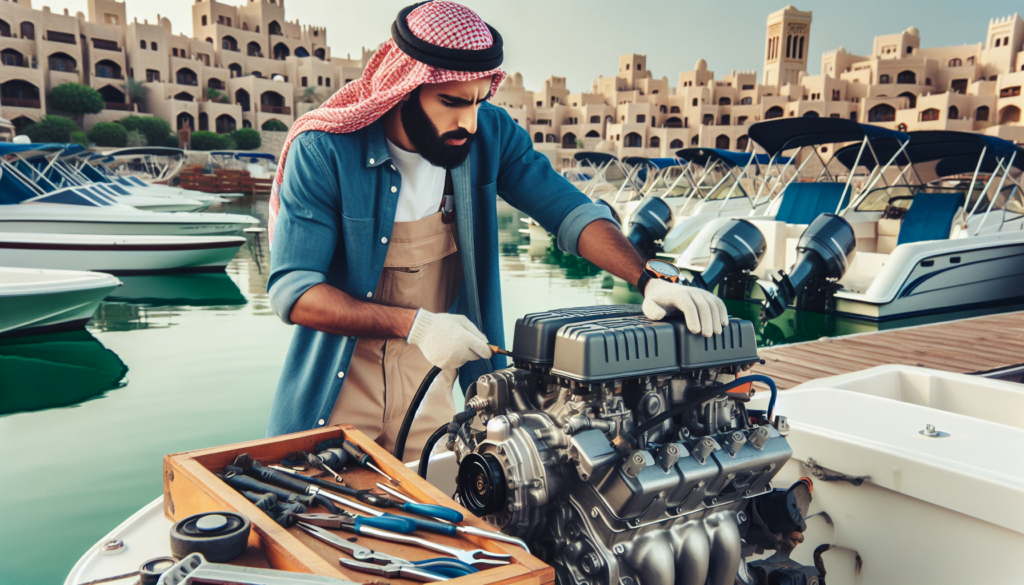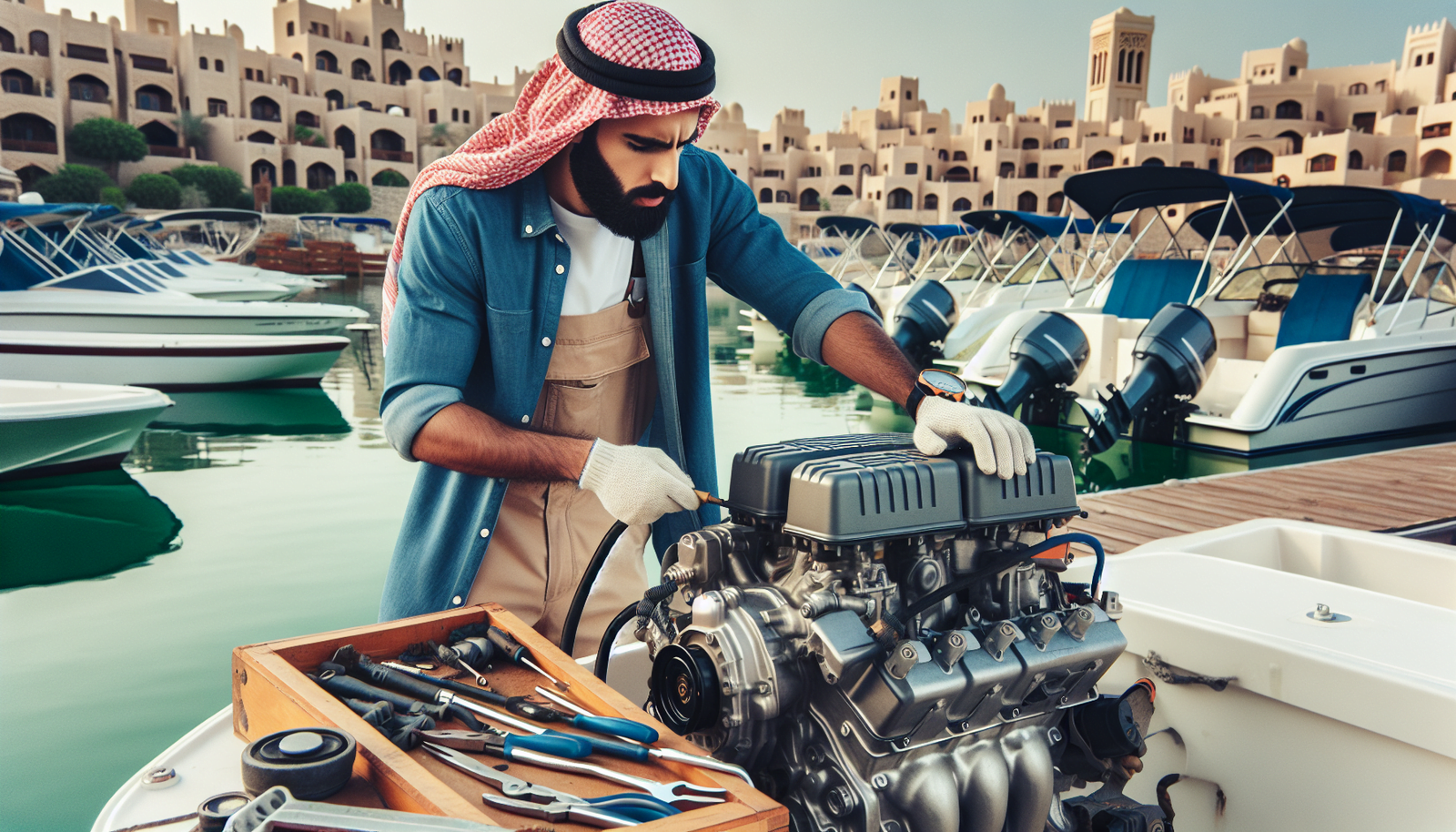Envision yourself sailing along in your favorite boat, basking in the glory of a perfect day on the water. Suddenly, your boat’s performance lags, and you’re left wondering what went wrong. In most cases, the cause is a lack of proper maintenance, particularly neglecting to perform a regular engine flush. But don’t worry, there’s an easy remedy! This article guides you through a quick and effortless process of performing an engine flush on your boat, keeping your vessel in peak condition for those glorious days out on the water. Hooray, for hassle-free sailing!
Understanding the Importance of an Engine Flush
Maintaining your boat is crucial, and an engine flush should be a routine part of that care. It helps keep your boat’s engine clean and running smoothly. But why does it matter so much?
Why regular engine flushes matter for your boat
An engine flush is similar to a detox for your boat’s engine. Over time, deposits like sludge and varnish accumulate in your engine. These can lead to poor engine performance, lower fuel efficiency, and even serious engine damage. Regular engine flushes help remove these deposits, providing for improved performance of the boat.
The potential risks of neglecting engine flushes
Neglecting engine flushes can expose your boat to multiple risks. The accumulation of deposits affects the boat’s performance and might lead to costly repairs down the line. You may encounter issues like blockages in the oil pump or oil galleries, decreasing oil pressure, which can be detrimental to the engine’s life.
Improve boat performance through flushing
By flushing your boat’s engine regularly, you can substantially improve its performance. Eliminating deposits improves fuel economy and extends the lifespan of your engine. It also allows for smoother and efficient boat operation, enhancing your overall boating experience.
Identifying the Suitable Time for Engine Flushes
Knowing when to execute an engine flush can be crucial for your boat’s health.
Frequency of engine flushes
The frequency of engine flushes depends on your boat usage and the type of water you use it in. As a rule of thumb, flushing your engine after every outing is ideal, especially if you boat in saltwater. On the other hand, if you sail in freshwater, a flush every three to four trips may suffice.
Ideal conditions for a routine flush
Ideally, you should flush your boat engine when it’s been used regularly and is warm. Warm oil will carry away more contaminants when flushed out.
Signs your boat engine needs an urgent flush
Watch for signs like decreased engine performance, increased fuel consumption, noise from the engine, or reduced oil pressure. These issues might hint at the need for an urgent engine flush.

Selecting the Right Engine Flush Product
Choosing an appropriate engine flush product can be critical in the overall effectiveness of the flush.
Role of engine flush products in cleaning
Flush products function as cleaning agents, dissolving the deposits in your engine when applied. They help in effectively removing the contaminants, leaving your engine clean.
Factors to consider when buying engine flush products
When choosing an engine flush product, consider factors like its compatibility with your engine, the severity of the engine contamination, ease of use, and customer reviews.
Top recommended engine flush products for boats
While there are several engine flush products in the market to choose from, some reliable ones include Sea Foam Marine PRO, Star Tron Engine Flush, and Quicksilver Power Tune. These are tried and tested products that have shown promising results across multiple consumer reviews.
Preparing Your Boat for the Engine Flush
Before starting the engine flush, it’s essential to prepare your boat adequately.
Secure the boat
Ensure your boat is secure, either on a trailer or a dock, before you start the engine flush. It’s critical to prevent any potential movement during the process.
Ensure proper ventilation
An engine flush should be performed in a well-ventilated area. Carbon monoxide produced by your boat’s engine can be hazardous.
Assemble necessary tools
You will need a few basic tools for an engine flush, such as a wrench, an oil drain pan, an oil filter wrench, and disposable gloves.
Turn boat engine off
Before starting the engine flush, make sure the engine is turned off.

Step-by-Step Guide on Performing a Quick Boat Engine Flush
Performing a boat engine flush might seem tedious, but once you understand the process, it’s fairly straightforward.
Running the engine
Start by running the engine, letting it warm up for a few minutes. This warms the oil and makes it easier for the flush product to do its job.
Adding the engine flush product
Add the engine flush product to the warm oil and follow the product’s instructions on how long to let it sit it before moving to the next step.
Letting the engine idle
Let the engine idle for the time recommended by the product instructions. This allows the flush product to circulate and clean the engine effectively.
Draining the old oil
After the specified wait time, drain the old oil carefully into a suitable container. Make sure there are no debris or spills.
Replacing the oil filter
Now is an excellent time to replace the oil filter. Keep a new oil filter handy and exchange it with the old one once you’ve drained the oil.
Safety Measures When Performing an Engine Flush
Safety comes first. To prevent any accidents or injuries, always take necessary precautions while performing an engine flush.
Wearing appropriate clothes
Wear clothes that can protect your skin from oil spills or splashes. Gloves and old clothes are good choices.
Avoiding spills
Avoid spills by ensuring the drain pan is securely positioned beneath the drain plug.
Handling the flushing product with care
Handle the flush product with respect. Always read and follow the manufacturer’s safety instructions carefully.
Proper disposal of waste oil
Waste oil is dangerous for the environment. Ensure you dispose of it the right way, according to local regulations.
Adhering to local regulations on waste disposal
Your local governing bodies have rules and regulations in place for waste disposal, especially related to oil waste. Make sure you follow these rules to help safeguard our environment.

Dealing with Potential Challenges During the Flush
You might encounter certain challenges during the engine flush. Here’s how you can tackle them.
Overheating during the process
If your engine overheats during the flushing process, switch it off immediately and let it cool down before proceeding.
Prolonged drain time
If the drainage is taking longer than expected, it could be due to a blockage. You might need professional help to clear it.
Covering spilled flush product
In case of any spills during the flushing process, cover the spill with sand or absorbent material.
Troubleshooting a clogged oil filter
A clogged oil filter can be a challenge during the process. If you face this issue, refer to your boat’s manual or consult a professional.
Post-Flush Boat Engine Care
Post-flush care for your boat is just as important as performing the flush correctly.
Adding new oil to the engine
Now that the dirty oil has been flushed out, it’s time to add new, high-quality oil to your engine. Follow the boat manufacturer’s advice on the quantity and type of oil to be used.
Regular check for leaks
Even after the flushing process, make sure to perform regular checks for any oil leaks.
Scheduled maintenance checks
Routine maintenances and checks are crucial for your boat’s overall health and longevity. Always follow regular maintenance schedules as recommended by your manufacturer.

Effectiveness of Regular Boat Engine Flushes
Regular engine flushes can offer many unparalleled benefits to your boat.
Long-term benefits of regular flushing
In the long term, regular engine flushes can extend your boat’s engine life and save on costly repairs resulting from undetected or untreated issues.
Influence on fuel consumption
A well-maintained engine burns fuel more efficiently. Thus, regular engine flushes can result in lower fuel consumption, saving you money.
Impact on boat’s resale value
Keeping your boat’s engine in optimal shape also significantly improves its resale value. That’s why regular engine maintenance, including flushing, is considered a sound investment.
Alternatives to DIY Boat Engine Flush
If you are not comfortable with doing engine flushes yourself, there are alternatives available.
Hiring professional marine services
Professional marine services are available to perform engine flushes for you. They may come at a cost but provide peace of mind and assurance that your boat is in expert hands.
Regular boat servicing packages
Many boat servicing companies provide regular maintenance packages, which include engine flushes. These are worth considering if you’re a frequent boater.
Considerations for choosing between DIY and professional flushing
Whether to opt for DIY flushing or choose professional services depends on various factors such as cost, time, and your comfort and familiarity with the task. Moreover, the complexity and size of your boat’s engine are crucial factors in making this decision. Remember, the critical thing is to ensure your boat is well maintained and its engine receives regular care.

